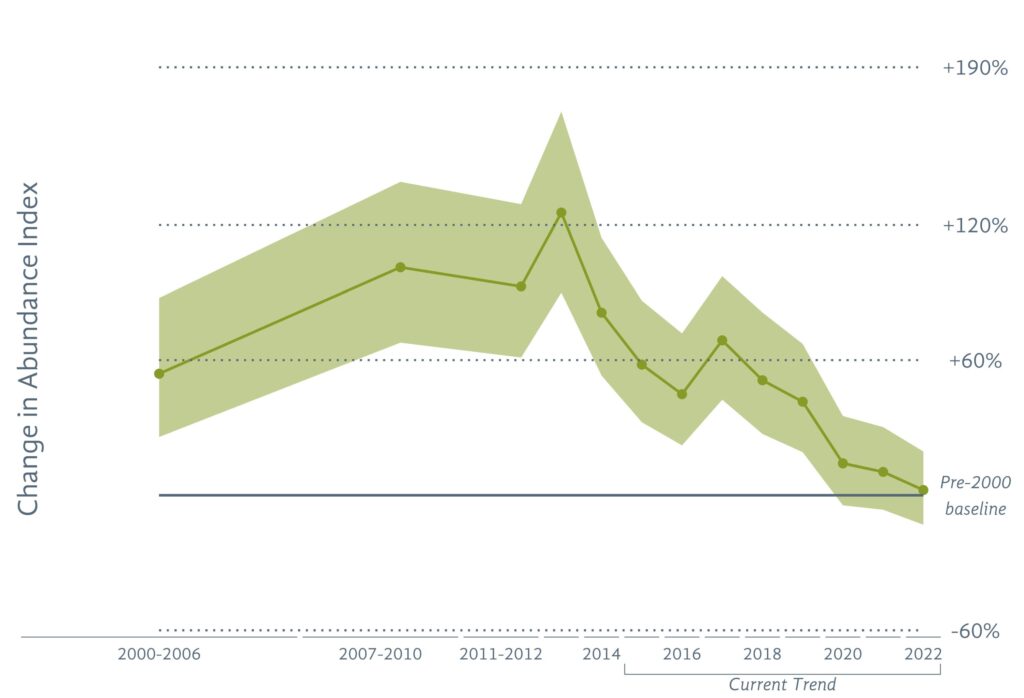The spot billed pelican has hit a rapid decline due to a new stomach parasite as well as human activities.
Spot-Billed Pelicans have had a rapid decline in the last three years according to the State of India’s Birds (SOIB) report 2023. There has been a 5.19 percent decrease in the current annual decline metric and a consistent decline of the number of birds since 2010. The wetland bird species resides in south India, especially the states of Andhra Pradesh and Karnataka.
The SOIB report shows that there has been a sharp decline in the number of Pelicans since 2015. A trend that was partially visible in the 2020 report which is much more prominent now.

Official reasons as stated by orinthologist Farah Ishtiaq in the report for this decline was the increase in the fluke and roundworm parasitesfound in freshwater fishes, which are the main source of nutrition for spot pilled pelicans.
The current reasons for the increase in the parasites are unknown. Climate change influencing existing river pollution being a possible explanation. A2008 report by Dr David Marcogliese, a research scientist from Canada, said that the transmission rates of parasites and pathogens are expected to increase with increasing temperature.
According to the AR6 Synthesis Report on climate change for 2023 by the Intergovernmental Panel on Climate Change, “Global surface temperature has increased faster since 1970 than in any other 50-year period over at least the last 2000 years.”
This, along with the existing factors such as stray dogs, increased destruction of their habitat, pollution and overfishing are causing their endangerment according to the SOIB report.
Fishing is also one of the potential causes for the decline of large water birds. “Commercial fishing is potentially an issue that affects water birds,” said Dr Seshadri KS from Atree, one of the NGOs who participated in the SOIB report.
“There’s a very structured way of giving tenders and contracts and it’s commercial fishing not sustenance fishing. That can deprive resources for birds like pelicans,” he further elaborated.
Dr Seshadri stated, “Some of the issues are fishing, and of course water pollution is another issue,” .
According to a 2020 article, “contaminated water bodies in the vicinity of Kokkarebellur, particularly in River Shimsha, a tributary of the Cauvery, flowing half a kilometre from the community reserve, are said to be one of the causes for the pelican deaths.”
Untreated Sewage from Maddur and Shivapura and refuse from nearby sugar factories was being let out into the tributary. The contaminated water from the tributary might be a possible cause for worm infestation.
The pelicans mainly reside in the Kokkarebellur area and visit Bangalore’s Lalbagh lake during the winter months till the first week of December.
This also seems to explain why no pelican deaths were reported in Bangalore, “We have more than 128 bird species,” said Deputy Director Kusuma, the official in charge of Lalbagh Lake. “We haven’t seen a decline in our pelican populations when they come to visit.”




